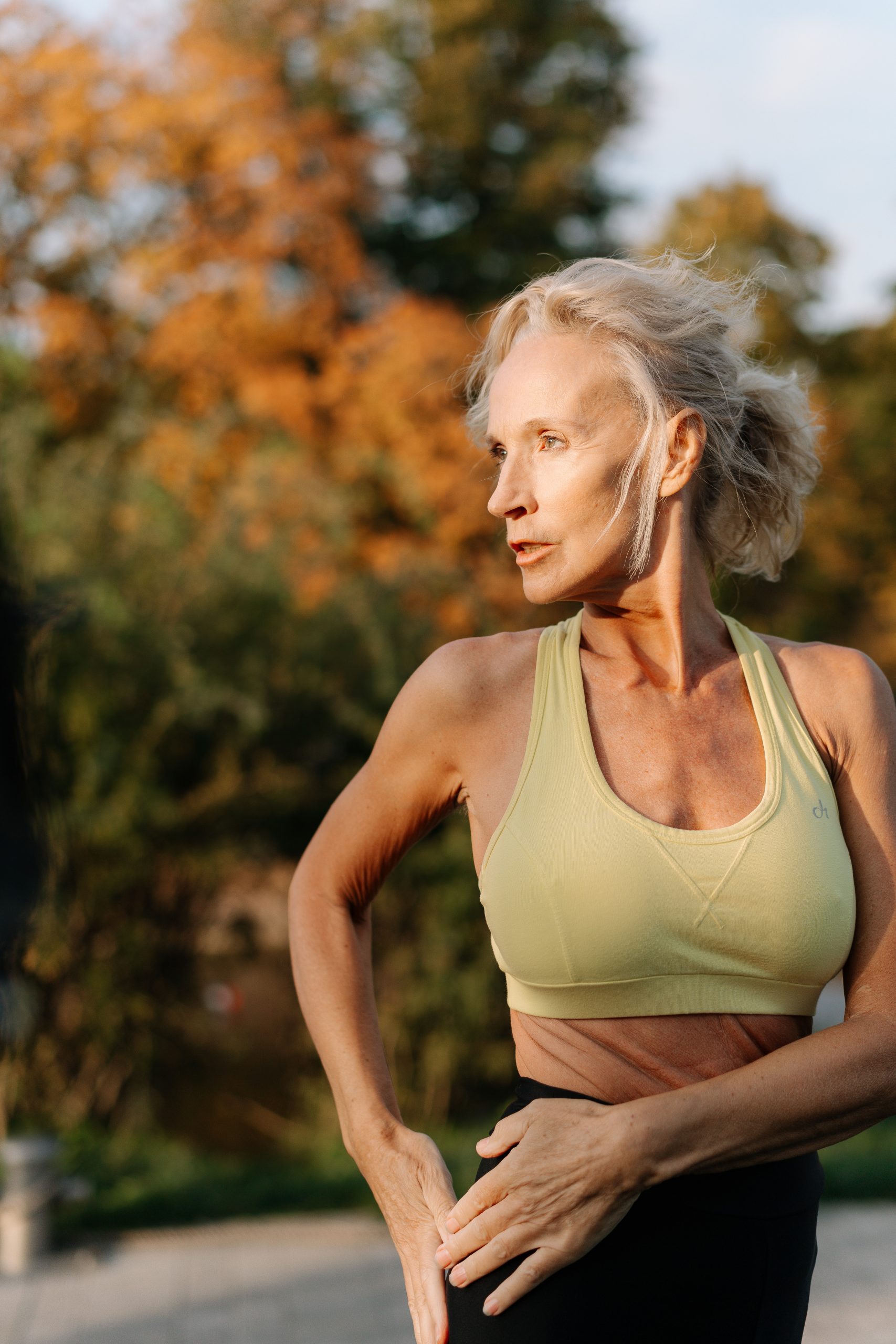We support lots of women through menopause…read on for our top tips for lessening symptoms with exercise.
Menopause…not a word women usually like to hear, but we treat quite a few women in this stage of their lives and have been asked what the best exercises are and how they can stay healthy during this time.
The NHS website describes menopause as a natural part of a woman’s ageing process, where oestrogen levels start to decline between the ages of 45 and 55. At this stage of life, a woman stops having periods and can no longer become pregnant naturally. This change can be sudden or simply a decrease in the frequency of periods over a number of months – it’s different for every individual. And whilst most women will experience some menopausal symptoms, the severity of these symptoms and the impact they have on everyday life will vary from person to person.
Menopausal symptoms can begin months or even years before your periods stop. This time is known as perimenopause and generally lasts around four years after your last period, although again, there are no hard and fast rules and some women experience them for longer.
Common symptoms include:
- Hot flushes
- Night sweats
- Vaginal dryness and discomfort during sex
- Reduced sex drive (libido)
- Problems with memory and concentration
- Headaches
- Recurrent urinary tract infections
Other symptoms that we’re interested in, include:
- Heart palpitations (could be atrial fibrillation which is an abnormal heart rhythm)
- Difficulty sleeping
- Mood changes (such as low mood or anxiety)
- Joint stiffness, aches and pains
- Reduced muscle mass
Apart from the above common symptoms, the drop in oestrogen levels associated with menopause means that women are at more risk of developing:
- High blood pressure (your heart and blood vessels may become stiff and less elastic which tends to raise your blood pressure)
- High cholesterol (lack of oestrogen can cause changes in your cholesterol and blood fats. Good cholesterol levels may reduce and bad levels may increase)
- Diabetes (women’s bodies can become more resistant to insulin which is the hormone needed to convert blood sugar and starches into energy cells)
- Weight gain (menopause can cause the metabolism to slow and oestrogen affects where woman store fat and how it is burned)
- Atrial fibrillation (a faster heart rate can occur, but sometimes hormonal changes can cause a slowing of the heart and heart blockages that can cause symptoms like dizziness)
Managing menopause symptoms

The good news? Cardiovascular exercise and strength training can make positive changes to all of the above symptoms.
The benefits of cardiovascular (aerobic) exercise – that’s any exercise that increases your heart rate and gets your lungs working harder – are well known, and advisable for all individuals, not only women experiencing the menopause. Cardio burns calories and uses energy which in turn metabolises fat and preventing weight gain (plus other conditions such as diabetes). It also strengthens the heart, lowers blood pressure and cholesterol, can reduce arthritic and joint pain, and reduces stress hormones through the release of endorphins. These feel-good chemicals should also help you to sleep better.
As you can see, cardiovascular exercise alone can improve a large portion of the symptoms of menopause and that’s why we advise it to so many of the women that we treat.
Types of cardio exercise

So, what does cardiovascular exercise look like? As mentioned earlier it can be anything that increases your heart rate and gets your lungs working harder, but below I’ve included a list of examples of both low and high impact cardio, depending on your individual strength and fitness.
Low impact exercises:
- Swimming
- Cross/elliptical trainer
- Cycling
- Rowing machine (or rowing on water)
- Walking/strolling
- Horse riding
- Ballroom dance classes which don’t involve jumping
Medium impact exercises:
- Water aerobics
- Zumba classes
- Aerobics (still no jumping), pilates or yoga (not always cardiovascular but could be)
- Brisk walking
- Skipping (if staying on your toes and low to the ground)
- Hiking
- Rollerblading/ice skating (gently)
- Cross country skiing
- Table tennis
- Thai chi
High impact exercises:
- Jogging/running
- Plyometric workouts (involving any jumping type exercises)
- Mountain climbing
- Skiing or snowboarding
- Racket sports (tennis, racketball, squash, badminton etc.)
- Other sports like cricket, football, basketball, netball, karate, water skiing, hockey
So many types of exercise!! Which to choose? But the point is that with so many options, everyone should be able to find a cardiovascular form of exercise that they enjoy and that fits into their lifestyle. Just remember that if you’re not used to cardio, start with low impact and work your way up to a more strenuous workout when your body gets stronger.
NHS guidelines suggest adults aged 19-64 should aim to be active in some way every day, aiming for 150 minutes of moderate intensity activity a week or 75 minutes of high intensity activity per week. This also applies to women going through menopause and our advice is that it’s vital for women to maintain their health at this time of life in an effort to help prevent the symptoms we’ve explored.
Although physiotherapy may not seem like your first port of call for menopause related issues or guidance, the physios at W5physio can provide lots of advice and a tailored exercise programme for you to help maintain your health naturally and holistically during menopause.
So, give us a call today (020 8997 1555) and we’ll help you to find enjoyable activities and an exercise regime that will help you to kick menopause in the butt. And remember to look out for our next blog on strengthening exercises to help you through the menopause too.




